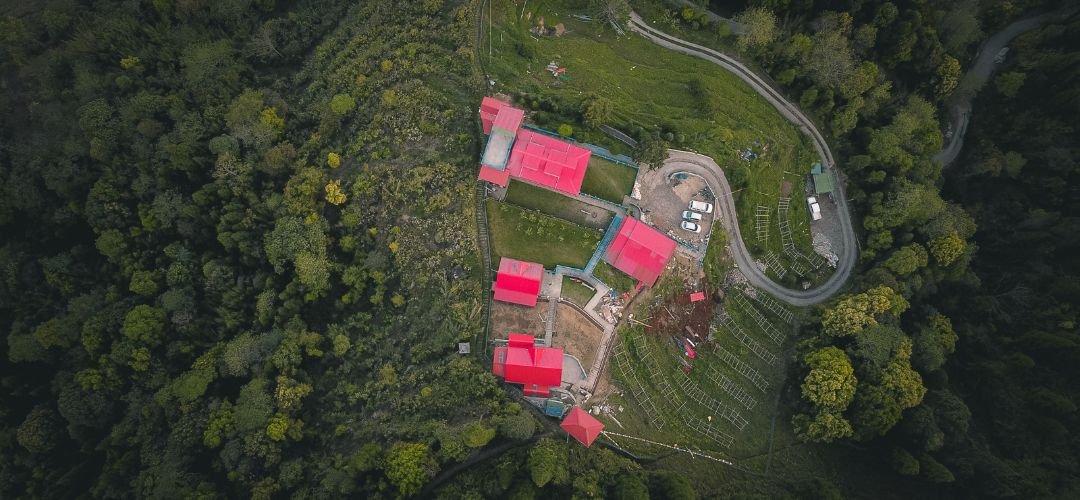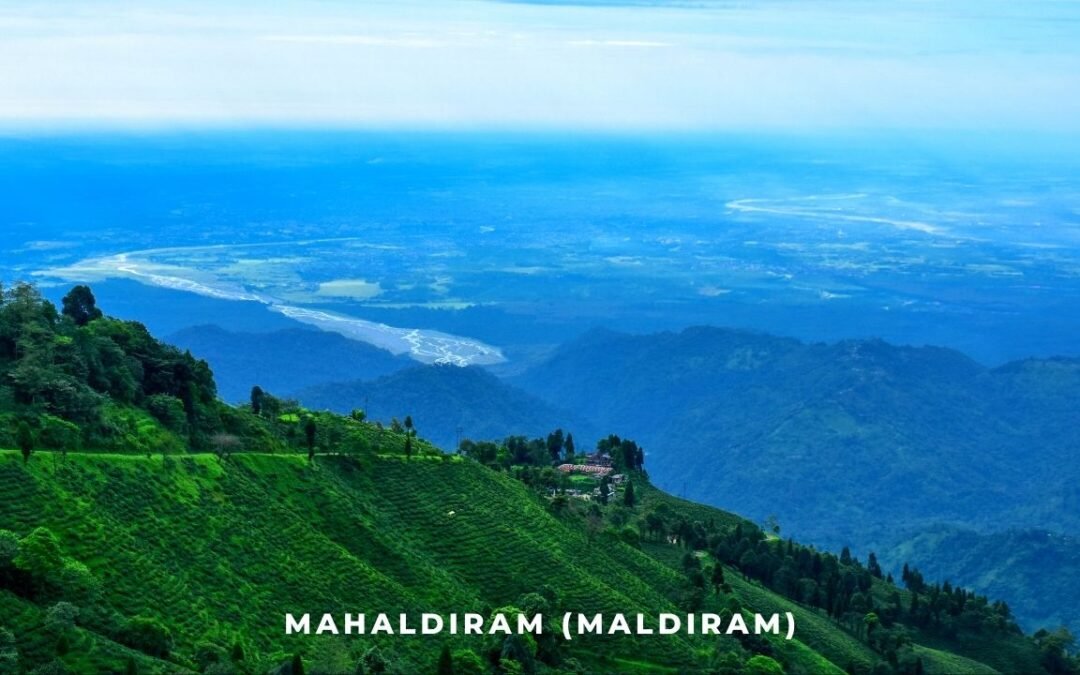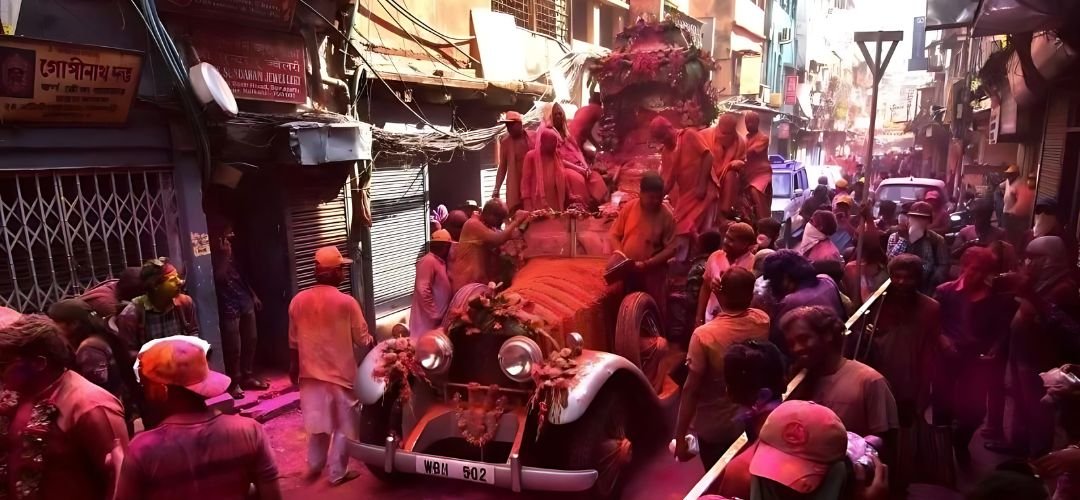Mongpu was the last place where Rabindranath Tagore celebrated his last birthday on May 9, 1940. He was 80 years then. He enjoyed staying at Mongpu and used to enjoy looking at the ‘Malatilata’ flowers. The tree is still there.
For us Bengalis, Rabindranath Tagore is like god. We have all grown up listening to his poems, learning his songs. I think there is very few Bengalis who would say that their child did not learn to sing Tagore songs and their little girls did not dance to the tunes of Rabindra Sangeet. Yes, as a child, even I learnt to dance on Tagore songs and also sang Rabindra Sangeet, though much to the dismay of my music teacher. I was and am too bad at singing! So visiting Mongpu on the Darjeeling hills is revisiting Tagore and is very special.

Mongpu used to be one of Gurudev’s favourite places. Though it does not have the views of the mountain ranges that its neighbouring places boast of, but the place has a charm of its own. Tagore used to stay at Maitreyi Devi’s house during his stays at Mongpu. The bungalow was an official bungalow belonging to her Quinologist husband Manmohan Sen who was then serving the government. Now the bungalow has been converted to a Museum – Rabindra Bhavan where memoirs, paintings and writings of Tagore are kept. The things that he used like his mahogany bed and study table are kept there exactly where he had kept them.
We travelled from Sitong to Mongpu crossing the mountain roads and as we approached Mongpu, we passed through the colourful nurseries and the red cinchona trees. Mongpu is also known for its cinchona plantation and quinine factory. We passed by the quinine factory where Maitreyi Devi’s husband worked and we were in front of Rabindra Bhaban. It had a rickety gate and the bust of Rabindranath Tagore stood in front of the gate. We were greeted by a lone person. He was the caretaker of the place as well as our guide.

He welcomed us quite enthusiastically and happily narrated about Gurudev’s stay at Mongpu. To him, Tagore is simply Gurudev. Tagore used to travel from Kolkata to Rambhi by car. During those days the roads to Mongpu were not developed. The local people carried him from Rambhi to Mongpu covering a distance of 12 km on a palanquin.
“ I am the grandson of the palanquin bearer. I am the 3rd generation”, our guide said. Actually, his grandfather was one of the palanquin bearers that brought Tagore to Mongpu. Even his father grew up interacting with Tagore and saw him work. He himself was totally devoted to Gurudev.

Rabindra Bhavan has most of the belongings of Tagore. The wooden desk where he used to write is kept there as it was before. The mahogany bed where Tagore slept is also kept there. Poems that were written by him, paintings made by the master are all kept there. There are also many old photographs of the poet and his acquaintances. But these photographs are in dire need of restoration. The government is oblivious and restoration needs a lot of money which these hill people cannot afford. They are trying hard to keep the memory of Tagore alive but finding it hard to finance the maintenance required for it.
Tagore had written his famous poem ‘Janmadin‘ at Shantiniketan. On his 80th birthday, he had recited the poem over the telephone for Prasar Bharati. That was his last recitation on radio.
There are also many doodles and meaningless drawings done by Gurudev kept at Mongpu. Our guide told us that when Gurudev wrote something and not find it satisfactory, he did not simply throw away those. He used to make doodles out of them. “ The sentences were created by him he did not let them die. If any writings did not satisfy him, he used to make these trivial paintings. He used to give these meaningless words a life.” We were quite overwhelmed listening to the explanation of our guide.

During this tour, we also learnt that Gurudev took an active interest in the lives of these simple village people. He also used to make medicines and prescribe them to the villagers. He also had devised a heating system to supply hot water to his bath. Geysers were not available at that time!
I guess creative individuals are also quite pragmatic.
We left Rabindra Bhavan with a heavy heart. The place is a treasure for all Tagore lovers. The paintings made by him during his last days are kept here. A little more care on the part of the government can make all the difference.

Other attractions at Mongpu:
Mongpu is also known for its cinchona plantations and has the quinine factory. The first such cinchona plantations started in 1864 and a government factory was also built during that time. The majority of the population depends on it for their livelihood. Though currently, quinine is artificially made, the natural extraction of quinine from cinchona has decreased considerably. We saw the quinine factory and the sheds to dry the plants on the roadside.
There is a Buddhist Monastery adjacent to the Mongpu market. Called the Dinchhen Sherap Chhoeling Gumba, this place is perched on top of a hillock and is a place of serenity. The monastery is like any other Buddhist monastery of the area.
Our tour of Mongpu ended on a bittersweet note. We loved this little town that is so much seeped with memories of Tagore but saddened by the state of Rabindra Bhavan. If you love the hills and also an admirer of the great poet, then Mongpu is just the right place for you.
How to reach Mongpu:
Mongpu is about 52 kilometres from Siliguri. Take the Sevoke road and then a diversion at Rambhi Bazar area near the Teesta to reach Mongpu. It takes about 2 hours to reach Mongpu. From Darjeeling, it is 35 km and will take around 1.5 hours.
Where to stay:
There are a few homestays at Mongpu having basic facilities. The best way to visit Mongpu is to make a one day trip here from Darjeeling.










Nice post 🙂 I’ll research on Malatilata’ flowers and the Monasteries in this zone..I’m sure Tagore liked the place for a reason 🙂
Thank you so much.. Mongpu has a different charm. 🙂